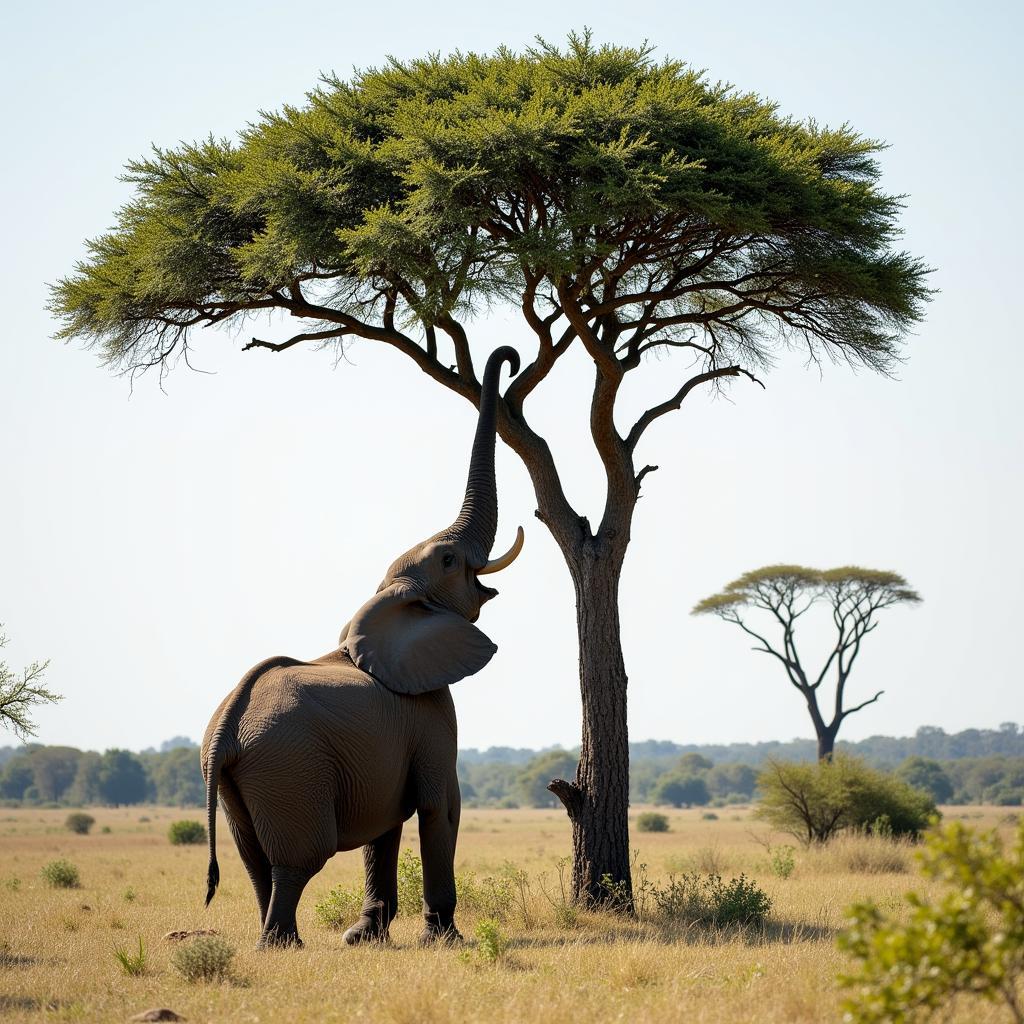Unveiling the African Bush Elephant Order: A Deep Dive into Their World
The term “African Bush Elephant Order” might seem perplexing at first, hinting at a formal hierarchical structure within these majestic creatures’ lives. While not strictly a “formal order” in the human sense, understanding the intricacies of African bush elephant social dynamics reveals a captivating world of complex relationships, communication, and cooperation. Let’s delve into the captivating realm of these gentle giants and unravel the secrets of their intricate social structure.
Deciphering the “African Bush Elephant Order”: It’s All About Family
Instead of a rigid order, envision the African bush elephant society as a matriarchal family unit, often referred to as a “herd” or “kinship group.” This structure forms the bedrock of their existence, shaping their interactions, movements, and ultimately, their survival.
At the helm of this fascinating social order presides the matriarch, typically the oldest and most experienced female. Her wisdom, accumulated over decades, guides the herd’s decisions, from navigating migratory routes and locating vital resources like water and food to mediating conflicts and nurturing younger generations.
Unpacking the Hierarchy: Beyond the Matriarch
Within this matriarchal society, a discernible hierarchy exists, influenced by factors like age, lineage, and individual relationships. Let’s break down the key players:
- Daughters and Sons: Female offspring typically remain within their natal herd throughout their lives, strengthening the familial bonds and contributing to the group’s collective knowledge. Male offspring, upon reaching sexual maturity (around 12-15 years old), usually disperse from the herd, embarking on a solitary life or forming loose bachelor groups.
- Grandmothers, Aunts, and Sisters: The presence of multiple generations of related females creates a robust support system within the herd. These experienced females contribute to raising young, sharing knowledge, and ensuring the group’s overall well-being.
- Calves: Newborn calves hold a special place within the herd, receiving collective care and protection. Their playful antics and rapid development provide a constant source of learning and amusement for all members.
Communication is Key: Maintaining Order in the Elephant World
Maintaining order within this complex society relies heavily on communication. African bush elephants communicate through an impressive repertoire of vocalizations, including:
- Rumbles: These low-frequency calls, often inaudible to humans, can travel for miles, facilitating communication over long distances. Rumbles convey a range of messages, from greetings and warnings to expressions of comfort and excitement.
- Trumpets: As the name suggests, these loud, resonating calls serve as alarm signals, expressing distress, excitement, or aggression.
- Infrasound: These incredibly low-frequency sounds, below the range of human hearing, travel through the ground and can be detected by elephants up to several kilometers away. This remarkable form of communication allows for long-distance coordination and reinforces social bonds.
Beyond vocalizations, visual cues like ear flapping, head shaking, and trunk gestures further enrich their communication, conveying nuanced messages within the herd.
The Importance of Understanding “African Bush Elephant Order”
While not a formal order in the human sense, appreciating the complexities of African bush elephant social structure is crucial for their conservation. Recognizing their familial bonds, communication methods, and the critical role of the matriarch provides valuable insights into their ecological needs and highlights the importance of protecting these magnificent creatures and their shrinking habitats.
Conclusion: Celebrating the Complexity of Elephant Societies
The “African bush elephant order” extends far beyond a simple hierarchy—it represents a deeply intertwined web of familial bonds, intricate communication, and cooperative living. By delving into their world and appreciating the sophistication of their social dynamics, we gain a deeper respect for these intelligent creatures and become better equipped to ensure their survival for generations to come.


